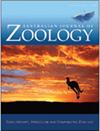小型哺乳动物对火灾响应的微生境选择
IF 1
4区 生物学
Q3 ZOOLOGY
引用次数: 3
摘要
了解火灾如何影响动物行为,如运动和资源选择,对生态系统管理很重要,因为它可以提高我们预测物种如何反应的能力。我们评估了两种小型哺乳动物——灌木大鼠(Rattus fuscipes)和敏捷前棘鼠(antechinus agilis)对低强度规定火灾的微生境选择。采用线轴跟踪和触杆植被调查的方法,对21条灌木鼠径和22条灌木鼠径进行了火灾前后的微生境选择。在未烧毁地区,灌丛大鼠对莎草、原木和生境复杂性表现出正向选择,对莎草、蕨类、灌木、生境复杂性和未烧毁斑块的选择进一步增强。在未燃烧区和燃烧区,敏捷蚁对微生境的选择不明显,对火的响应也没有变化。它们对地面火灾缺乏反应,部分原因可能是由于它们的搜寻行为和将树洞作为避难所。灌木丛老鼠对小块未被烧毁的区域的强烈选择表明,即使是低强度的、局部的火灾,如计划中的烧伤,也能影响灌木丛老鼠,而高度烧伤的斑块可能有助于灌木丛老鼠在最近被烧毁的区域坚持生存。未来的火灾规划应考虑动物对火灾的行为和种群反应。本文章由计算机程序翻译,如有差异,请以英文原文为准。
Microhabitat selection by small mammals in response to fire
ABSTRACT Understanding how fire influences animal behaviour, such as movement and resource selection, is important for ecosystem management because it can improve our capacity to predict how species will respond. We assessed microhabitat selection by two small mammals, the bush rat (Rattus fuscipes) and agile antechinus (Antechinus agilis), in response to a low intensity prescribed fire. We used spool and line tracking and touch pole vegetation surveys to quantify microhabitat selection along 21 trails for bush rats and 22 for antechinuses before and after fire. In unburnt areas, bush rats showed positive selection for sedges, logs, and habitat complexity, with selection further increasing in burnt areas for sedges, ferns, shrubs, habitat complexity and unburnt patches. Agile antechinuses showed no significant microhabitat selection in unburnt or burnt areas and no change in response to fire. Their lack of response to ground fires may be due, partially, to their scansorial behaviour and use of tree hollows as refuge sites. Strong selection by bush rats for small unburnt patches suggests that even low intensity, patchy fires such as planned burns can impact bush rats and that high burn patchiness may help bush rats persist in recently burnt areas. Future fire planning should consider both behavioural and population responses of animals to fire.
求助全文
通过发布文献求助,成功后即可免费获取论文全文。
去求助
来源期刊
CiteScore
2.40
自引率
0.00%
发文量
12
审稿时长
>12 weeks
期刊介绍:
Australian Journal of Zoology is an international journal publishing contributions on evolutionary, molecular and comparative zoology. The journal focuses on Australasian fauna but also includes high-quality research from any region that has broader practical or theoretical relevance or that demonstrates a conceptual advance to any aspect of zoology. Subject areas include, but are not limited to: anatomy, physiology, molecular biology, genetics, reproductive biology, developmental biology, parasitology, morphology, behaviour, ecology, zoogeography, systematics and evolution.
Australian Journal of Zoology is a valuable resource for professional zoologists, research scientists, resource managers, environmental consultants, students and amateurs interested in any aspect of the scientific study of animals.
Australian Journal of Zoology is published with the endorsement of the Commonwealth Scientific and Industrial Research Organisation (CSIRO) and the Australian Academy of Science.

 求助内容:
求助内容: 应助结果提醒方式:
应助结果提醒方式:


